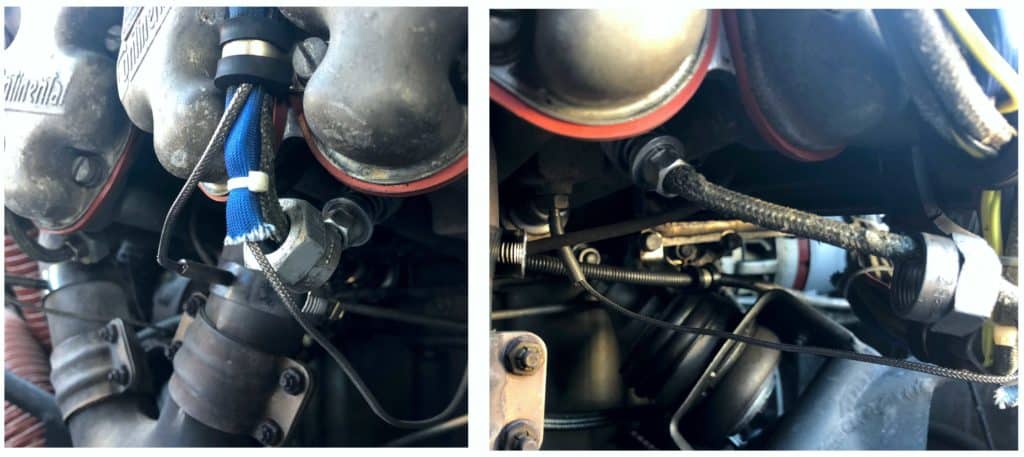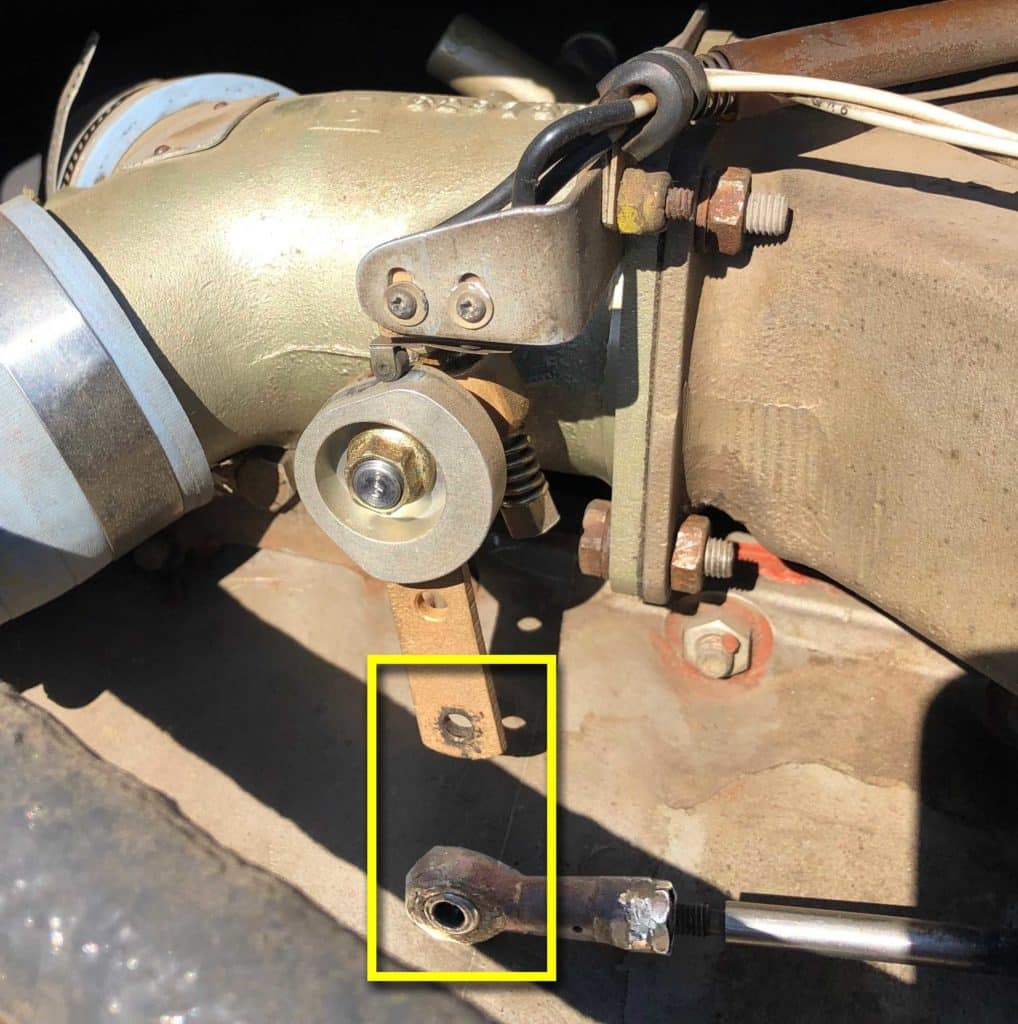When mechanics get interrupted, bad things can happen
I was recently contacted by the owner of a Cessna Hawk XP (R172K)—I’ll call him “Sam”—who seemed rather shaken by a recent series of events. He told me he was a student pilot with solo flight privileges and ready to make his first solo cross-country flight in pursuit of a private pilot certificate. Sam and his CFI had flown the Hawk from its home base to a small well-regarded maintenance shop at a nearby airport for some adjustments to the fuel system of the airplane’s Continental IO-360 engine. At the shop, the A&P/IA—I’ll call him “Rick”—found leaks in the system and recommended that the fuel system be removed sent out for overhaul. Sam agreed to this, and since this would ground the plane for several weeks and its annual inspection was coming due not long afterwards, Sam asked Rick to perform an annual inspection on the airplane while the fuel system was being overhauled.
About six weeks later, Rick called Sam to advise that the aircraft was ready for pickup. Sam and his CFI went to the shop to fly the plane back to its home base. They pre-flighted the aircraft and no discrepancies were evident. They flew home and the airplane performed normally. Sam and his CFI subsequently flew the airplane on a dual cross-country flight lasting about three hours round-trip, and again the airplane performed normally.
Bad mag check
About two weeks later, Sam decided to fly the airplane solo. During the pre-flight mag check, the engine ran roughly on the right magneto, with an excessive RPM drop. Assuming this was simply a fouled spark plug, Sam attempted to clear the plug, but without success. Sam phoned Rick to describe the symptoms. Rick agreed that it sounded like a fouled spark plug and gave Sam instructions on how to clear the plug. Sam tried once again to clear the fouled plug, but the engine continued to run rough on the right magneto. Sam phoned Rick again, and Rick told Sam to fly the airplane to his shop so that Rick could look at it, assuring Sam that the airplane would be safe to fly because it has two magnetos. Rick explained that he was a licensed pilot and had “done this many times” himself.
The next day, Sam intended to fly the airplane to Rick’s shop, but the engine still ran rough on the right magneto, so Sam decided to stay in the local traffic pattern and shoot some touch-and-goes. On the second touch-and-go, the engine seemed to sputter slightly on takeoff. On the third touch-and-go, the engine sputtered a couple of times, causing Sam to decide to make a full-stop landing, park the airplane, and investigate further.
Sam removed the top engine cowling and was horrified to find that the ignition leads on two cylinders had B-nuts that were floating free and cigarettes that were partially backed out from the spark plugs. He hand-checked the B-nuts on the ignition leads for the other four cylinders and found all of them to be loose and in the process of backing off the plugs.

Sam phoned Rick to report what he had found. Rick apologized and said he’d drive to Sam’s airplane the following week to fix the loose B-nuts. In the meantime, Sam noticed that the nosegear tire appeared to be underinflated and decided to inflate it to the proper pressure, but discovered that the valve stem was not accessible through the wheel fairing access door because the nosewheel had been installed backwards with the valve stem on the wrong side. Sam also noted that the dynamic balance weight washers that had previously been installed on the spinner were missing. Sam took notes on these additional discrepancies so he could report them to Rick.
A week later, Rick met Sam at the airplane to rectify the problem with the loose ignition harness B-nuts. Sam brought the other discrepancies he’d found to Rick’s attention and asked him to correct these issues as well. Sam gave Rick keys to the airplane and asked to be notified when the work was finished. The next day, Rick advised Sam that the airplane was “good to go” and that he would “have no problem flying it with his kids on board.”
It gets worse
Sam started planning his first solo cross-country but was still apprehensive about the mechanical status of the airplane. A visiting friend who was an experienced pilot offered to fly the airplane with Sam to help restore his confidence in the machine. They took off on a short flight to another nearby airport. Approaching their destination, the pilots throttled the engine back to 21 inches of manifold pressure to slow the airplane during the decent. Upon entering the traffic pattern, they throttled back further but the engine did not respond to the throttle inputs and manifold pressure remained at 21 inches. Attempts to move the throttle in either direction now had no effect on engine power. Sam’s pilot friend took control and reduced power by pulling the mixture control and was able to land without incident.
After landing, Sam removed the top cowling and observed that the throttle cable rod-end was not connected to the bellcrank on the throttle body. The clevis bolt and its retaining nut and cotter pin were missing and could not be located. Understandably, Sam’s faith in his airplane and mechanic were badly shaken.

Hardly an isolated case
Sam and his friend were not injured, and the aircraft was undamaged. They were quite fortunate. Literally the day before Sam told me his story, I had been reading an NTSB probable cause report of a fatal accident that was eerily similar.
It involved the May 2016 crash of a Beech Bonanza in Arizona. A flight instructor was performing a post-maintenance test flight of the airplane following the installation of a repaired carburetor and elected to use the flight to provide instruction to the private pilot who had requested a checkout in the airplane. The private pilot reported that the flight was initially normal, but then the engine stopped responding to throttle control. According to the private pilot, the engine remained at idle power as the airplane descended and impacted trees in a residential area. The flight instructor was killed in the crash, and the private pilot sustained serious injuries.
Examination of the wreckage revealed that the carburetor throttle cable was detached from the throttle body linkage. The bolt and castellated nut used to secure the throttle cable to the linkage were found lying separately in the engine cowling; there was no evidence that a cotter pin had been used to secure the nut on the bolt, as required.
The NTSB determined the probable cause of the accident was “the mechanic’s failure to properly secure the bolt connecting the throttle cable to the carburetor during the installation of the carburetor, which resulted in a loss of engine power.”
I did a quick search of the NTSB database, and quickly located many more accidents like this. In November 2016, a Cessna P210 crashed near Pleasanton, Texas only a few hours following recent maintenance. The commercial pilot reported that, about 20 minutes into the cross-country flight, the engine suddenly experienced a partial loss of power. During the subsequent forced landing to a road, the airplane struck a car, resulting in substantial damage to the fuselage and both wings, and injuring both occupants of the airplane. Examination of the airplane revealed that the hardware that attached the throttle linkage to the engine was not present. Probable cause: “Maintenance personnel’s improper installation of the throttle linkage attachment hardware, which resulted in a partial loss of engine power when the hardware separated in flight.”
In April 2016, a flight instructor and his student departed normally from San Carlos, California airport and climbed to an altitude of 1,000 ft above ground level. The pilot attempted to reduce engine power to a climb power setting, but the engine was unresponsive to throttle inputs. The pilots returned to the airport, pulled the mixture control to the idle cut-off position when the airplane was over the runway threshold, and landed uneventfully. Examination revealed that the throttle cable had broken. Probable cause: “The failure of maintenance personnel to properly install and secure the input swivel boot on the swivel joint, which resulted in excessive vibration that led to fatigue cracks and failure of the throttle cable.”
In July 2013, a Mooney M20J crashed near Leonardtown, Maryland, injuring the pilot and his flight instructor. They were practicing instrument maneuvers about 1,500 feet mean sea level when the engine stopped responding to throttle control inputs and producing enough power to maintain level flight. The pilots chose to conduct an off-airport landing to a field, which resulted in substantial damage to the fuselage and wings. A bolt and nut were found resting on the bottom of the cowling, and the throttle arm linkage was not connected to the throttle body arm. Probable cause: “The improper installation and inspection of the throttle linkage by maintenance personnel, which resulted in the throttle linkage coming loose and a subsequent partial loss of engine power.”
I could go on, but you get the idea…
Errors of distraction
Distractions often play a big part in such maintenance errors. A common scenario is that a mechanic installs nuts or bolts or ignition B-nuts finger tight, then gets a phone call or goes on lunch break and forgets to finish the job by torqueing the fasteners. I have personally seen some of the best, most experienced mechanics I know fall victim to such seemingly rookie mistakes. Many fatal accidents and countless less-serious incidents have been caused by such omissions.
Just as pilots need a “sterile cockpit” during high workload phases of flight, mechanics need a distraction-free workplace when performing safety-critical maintenance tasks. Unfortunately, the typical small piston GA shop is a distraction-rich environment. Phone calls come in. Customers drop by unexpectedly. UPS and Fedex drivers deliver anxiously-awaited parts. The Snap-On tool truck stops by. The shop’s FAA principal maintenance inspector pays a surprise visit. The roach coach arrives with lunch.
Aircraft owners and pilots need to be mindful that maintenance errors create a significant hazard, and must act accordingly. The most likely time for an aircraft to suffer a mechanical problem is on the first flight after maintenance. Be thoroughly skeptical any time an aircraft comes out of the shop. Your pre-flight and post-maintenance test flight are the last line of defense against maintenance errors.
You bought a plane to fly it, not stress over maintenance.
At Savvy Aviation, we believe you shouldn’t have to navigate the complexities of aircraft maintenance alone. And you definitely shouldn’t be surprised when your shop’s invoice arrives.
Savvy Aviation isn’t a maintenance shop – we empower you with the knowledge and expert consultation you need to be in control of your own maintenance events – so your shop takes directives (not gives them). Whatever your maintenance needs, Savvy has a perfect plan for you: